When I first began learning about wild horses and burros, it started with being told that the Las Vegas area didn’t have enough water to support them – that’s why they had to go – for their own protection and the protection of the range. But when I looked a little deeper, I found out that wasn’t exactly true.
Turned out there were a lot more water sources around than BLM was counting and much of what they were telling the public was convoluted at best.
Finding out the truth began with asking a question about hundreds of thousands of acres that disappeared from the Herd Areas and it took a couple of months before BLM finally coughed up the answers.
Turned out, this acreage went to U.S. Forest Service in a land transfer two decades ago. Following the trail back, it also turned out the U.S. Forest Service just happened to get the majority of the springs in that land transfer leaving BLM – and the wild horses and burros – with very little left under BLM control. (1)
Then U.S. Forest Service made a few changes. The first was to completely exclude wild horses and burros from the top 100,000 acres in the area where the majority of these springs occurred and no wild horse and burro use became the new “policy”.
Then, for the areas wild horses and burros were still allowed, U.S. Forest Service gave them a water allocation, 7% to be exact, while the transplanted elk population was issued 15%. Sure, BLM is still the “lead agency” in management when it comes to removals but USFS sets the majority of the land use policies and resource allocations - then BLM just mostly handles the removals from there. (2)
I began noticing an emphasis on the “thriving ecological balance” wild horses and burros were removed to protect was heavily weighted towards the “native” wildlife, often the central focus in decision after decision where wild horses and burros kept getting removed or disappearing altogether.
So began the journey of looking around at just what exactly comprised this “thriving ecological balance” they kept getting squeezed out from and that led to checking out State Fish & Game big game statistics on the other “major resources users” within the areas.
That led to the realization that hunting was big business and successful “educational programs” conducted by the stewards of hunting, often the scientists that produced the studies that justified their conclusions - Horses and burros bad/native wildlife good - somehow managed to turn wild into feral in the minds of an increasingly environmentally conscious public as they exploited people’s concern about wildlife habitat loss due to mankinds resource exploitation to favor these big game species instead.
So now when I hear wild horses and burros must be reduced and removed to protect the “native” species, the first thing on my To Do List is to check just what are the actual populations of those native species, something I might add is often not easily found.
When Montana announced that there just wasn’t room for any more wild horses in the “thriving ecological balance” regarding the Pryor Mountain Wild Horse Range, even though Montana is now down to their last herd out of the six that were originally protected in 1971, I decided to go check out what Montana DID have room for.
Turned out, Montana has a lot of room, just not for wild horses. Here are some current statistics:
Montana stretches for 2,000 square miles, is home to barely 1 million people(3), contains 2.4 million cattle, 290,000 sheep and 180,000 pigs(4), 130,000-160,000 elk, 5,900 Rocky Mountain bighorn, and so many mule deer and pronghorn antelope Montana State Fish & Game can even count them all. (5)
That’s right, up to 160,000 elk and 5,900 Rocky Mountain bighorn. Apparently the habitat is a little more abundant everywhere else in Montana except in the Pryor Mountain Wild Horse Range where the “allowable” maximum number of wild horses in the entire state is 105 - anything more is deemed excessive and begins to endanger the thriving ecological balance.
So just within the State of Montana, if you substituted wild horses and burros for elk, you could fit the entire current national “appropriate management level” of every single wild horse and burro throughout the West (27,500), PLUS every wild horse currently being held in long-term containment that was deemed “excessive” (30,000), three times over.
So here’s some other fun facts about elk populations and wild horses and burros.
- Montana Fish & Game estimate that 60% of their Elk Management Units are above population objectives.
- Colorado recently saw BLM declare the West Douglas Herd in Colorado, which spans 128k acres with an estimated 120 wild horses, as “unfit” for wild horse use. Only 4 herds remain out of 8 with a state “appropriate management level” of 812 wild horses. Meanwhile, Colorado’s 2007 estimated elk population is 250,000 to 260,000 and reports that the elk herds have been 10-15% above population management objectives for over 20 years.
- The White River-Flat Tops region is home to the largest migratory elk herd on earth – 40,000 elk, which just also happens to be about 12,000 more than the “approved” population throughout the West of both wild horses and burros!
- The combined estimated elk populations in 2007 for just Colorado, Idaho, Utah, Montana, and Wyoming is 675,000-700,000 elk. The gap of population estimates is almost as large as America’s entire remaining free-roaming wild horse and burro populations.
~Here is the actual breakdown of elk to wild horses*~
~Colorado~
250,000-260,000 Elk ~ 812 Wild Horses
~Idaho~
125,000 Elk ~ 617 Wild Horses
~Montana~
130,000-160,000 Elk ~ 105 Wild Horses
~Wyoming~
90,000 Elk ~ 3,725 Wild Horses
~Utah~
63,000 Elk ~ 1,981 Wild Horses ~ 170 Wild Burros
*AML is used to show what BLM believes is “appropriate” since wild horse numbers that exceed AML are removed.
Elk Photo from Elk Management in 5 Western States – Montana.
(1) Difference in acreage noted between BLMs Fiscal Year 2004 and 2005 Herd Statistics for Red Rock HMA, Wheeler Pass HMA, and Johnnie HMA. Land Transfer explanation from personal letter sent from United States Department of the Interior, Bureau of Land Management, Nevada State Office, Margaret L. Jensen, Deputy State Director, Natural Resources, Land & Planning, 9/19/06
(2) General Management Plan for the Spring Mountains National Recreation Area, An Amendment to the Land and Resource Management Plan, Toiyabe National Forest
(3) U.S. Census Bureau Quick Facts, Accessed 2/11/08 http://quickfacts.census.gov/qfd/states/30000.html
(4) USDA Montana State Agriculture Overview – 2006, Accessed 2/11/08 http://www.nass.usda.gov/Statistics_by_State/Ag_Overview/AgOverview_MT.pdf
All Elk statistics taken from "Elk Management of 5 Westerns States" available at Montana Fish & Game http://fwp.mt.gov/default.html
All Wild Horse and Burro Statistics taken from BLM Wild Horse & Burro Program website and Fiscal Year 2007 Herd Statistics.


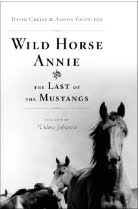








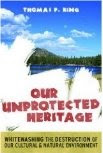



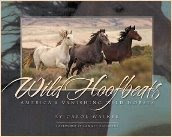




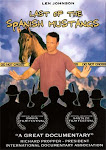





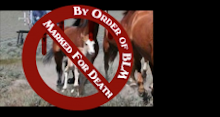

No comments:
Post a Comment